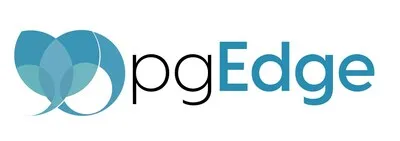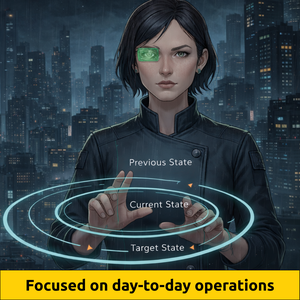
Kubernetes + Postgres = Finally Sane? CloudNativePG and pgEdge Think So
TL;DR
pgEdge integrates CloudNativePG to streamline Postgres deployment on Kubernetes with new container images and an updated Helm chart.
Key Points
Highlight key points with color coding based on sentiment (positive, neutral, negative).pgEdge has integrated with CloudNativePG to enhance the deployment of Postgres on Kubernetes, making it more accessible and supporting flexible deployment options.
New container images for pgEdge have been released, supporting Postgres versions 16 through 18, with two flavors: Minimal, which includes core extensions for distributed deployments, and Standard, which adds popular extensions like pgVector and PostGIS.
An updated pgEdge Helm chart simplifies the deployment and operation of distributed Postgres architectures, offering flexible deployment options for both single-region and multi-region setups.
CloudNativePG, a Kubernetes operator, automates the lifecycle management of PostgreSQL clusters, and has been accepted into the Cloud Native Computing Foundation, indicating its maturity and community adoption.
The integration supports multi-cluster and multi-cloud deployments, leveraging standard Kubernetes tools for cross-cluster networking and certificate management, enhancing performance and availability across different regions and cloud providers.
Key Numbers
Present key numerics and statistics in a minimalist format.The number of GitHub stars for CloudNativePG
The total number of downloads for CloudNativePG
The range of Postgres versions supported by the new pgEdge Postgres container images
Stakeholder Relationships
An interactive diagram mapping entities directly or indirectly involved in this news. Drag nodes to rearrange them and see relationship details.Organizations
Key entities and stakeholders, categorized for clarity: people, organizations, tools, events, regulatory bodies, and industries.Developed the pgEdge Enterprise and Distributed Postgres solutions, facilitating their deployment on Kubernetes through integration with CloudNativePG.
Provides the capabilities for running Postgres on Kubernetes, which pgEdge leverages for enhanced deployment options.
Oversees CloudNativePG, supporting the growth and adoption of cloud-native technologies.
Tools
Key entities and stakeholders, categorized for clarity: people, organizations, tools, events, regulatory bodies, and industries.A solution developed by pgEdge for deploying Postgres on Kubernetes, integrated with CloudNativePG.
Part of pgEdge’s offerings, enabling distributed database capabilities on Kubernetes.
Used to update the chart for deploying pgEdge solutions on Kubernetes.
Timeline of Events
Timeline of key events and milestones.Denis and Phillip Merrick decided to revisit the idea of fully distributed Postgres, leading to the creation of pgEdge.
CloudNativePG was accepted into the Cloud Native Computing Foundation at the Sandbox maturity level, marking a significant milestone in its development.
pgEdge announced its integration with CloudNativePG to enhance Postgres deployment on Kubernetes, providing more robust solutions for developers.
pgEdge released new Postgres container images supporting versions 16 through 18, available in Minimal and Standard flavors.
An updated Helm chart was released by pgEdge to simplify the deployment and operation of distributed Postgres architectures, supporting multi-cluster Kubernetes deployments.
CloudNativePG just hit a big milestone by joining the Cloud Native Computing Foundation at the Sandbox maturity level. This isn't just a badge of honor; it's a sign that the project is becoming a key player in the cloud-native world. For those in the trenches of development and DevOps, this means more reliable ways to manage Postgres databases on Kubernetes. It's a move that could spark more innovation and collaboration within the community, which is always a good thing.
Meanwhile, pgEdge is making waves of its own by integrating with CloudNativePG. This partnership promises to make deploying and managing Postgres on Kubernetes a smoother ride. Plus, pgEdge has rolled out new Postgres container images for versions 16 through 18. These come in both Minimal and Standard flavors, so there's something for everyone depending on what your deployment needs. It's a step that should make setting up and maintaining Postgres databases in cloud-native environments a whole lot easier.
But wait, there's more. pgEdge has also updated its Helm chart, which is a big deal for anyone dealing with distributed Postgres architectures. This update supports multi-cluster Kubernetes deployments, simplifying the management of complex database setups. For developers looking to streamline their workflows, this new Helm chart could be a game-changer. With these updates, pgEdge is carving out a niche as a go-to resource in the cloud-native Postgres space, offering tools that really speak to the needs of developers and DevOps teams alike.
Additional Resources
Enjoyed it?
Get weekly updates delivered straight to your inbox, it only takes 3 seconds!Subscribe to our weekly newsletter Kaptain to receive similar updates for free!
Give a Pawfive to this post!
Start writing about what excites you in tech — connect with developers, grow your voice, and get rewarded.
Join other developers and claim your FAUN.dev() account now!
FAUN.dev()
FAUN.dev() is a developer-first platform built with a simple goal: help engineers stay sharp without wasting their time.

Kaptain #Kubernetes
FAUN.dev()
@kaptain

















